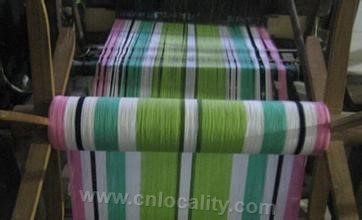welcomeSpecialty Foods Products!

Sipi taping cloth is a kind of folk woven homespun which is widely popular in Shiliting town and Kongzhuang area of Shahe. At the beginning of the Qing Dynasty, the textile technology of four pieces of taping cloth was introduced to Shiliting and Kongzhuang in Shahe. In this period, simple tools were gradually used in textile production, and after historical development, combined tools came into being, but they were still hand-woven. The manufacturing process of four pieces of taping cloth in Shahe is all made by hand, and it is woven into different patterns by various colors, longitude and latitude, and there are generally more than 20 colors, such as big and small dots, jujube flowers and lace. Because four loops are used to distinguish the warp format in the manufacturing process, it is called four loops. As a typical folk handicraft, he once represented Hebei Province in the Asian folk art exhibition held in Japan. The traditional process steps of Shahe four-piece taping cloth are: cotton fiber carding, rolling, spinning ears, rolling, boiling, dyeing, winding and twisting. The instruments used are cotton gin, jacquard machine, spinning car, crutch, wheel car, twisting, winding, loom, warp rope, warp stick, snap and shuttle. The patterns of the four pieces of cloth in Shahe are colorful and diverse, with all kinds of dots, dates and bumps. There are also products with story content such as lotus lanterns, pomegranate blossoms, fairy scattered flowers and ants going up the mountain. It can be made into clothes, bedding surface, sofa cover, towel, pillow towel and apron for daily wear. In the past, local women used to weave, but now many people have stopped spinning flowers and weaving for at least 20 years, and even fewer young women have learned to weave. In addition, many textile tools are damaged and lost, and this handicraft skill is facing extinction.
Reprinted with attribution:
https://cnlocality.com/(Chinese Specialty Products)
other
consult:(+86)13225231905